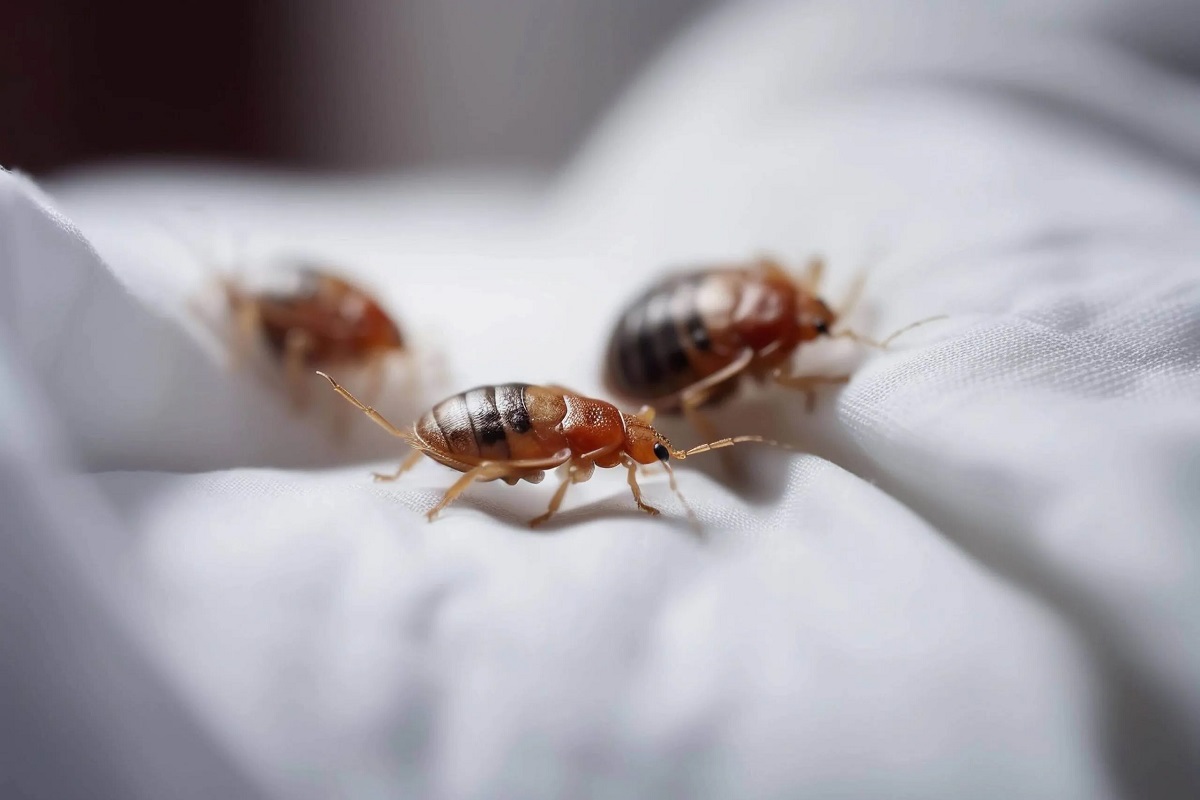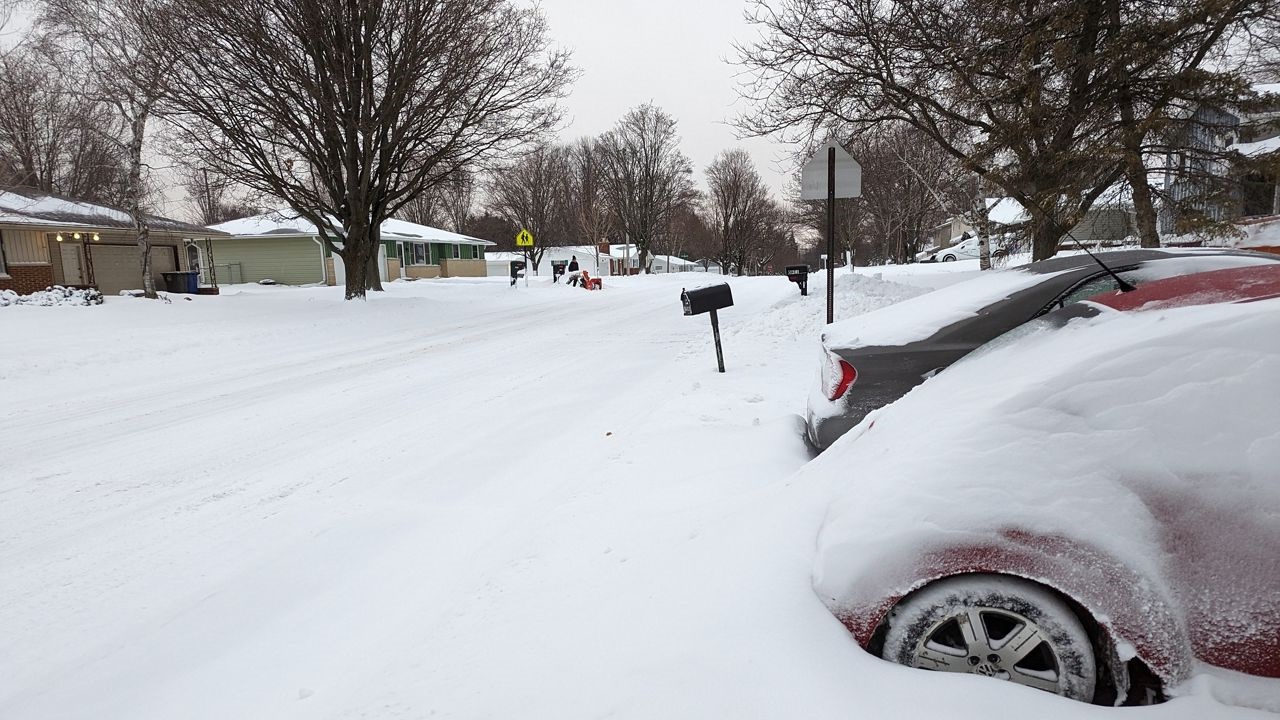Home>Weather and Climate>How Cold Temperature Can Help Get Rid Of Bed Bugs


Weather and Climate
How Cold Temperature Can Help Get Rid Of Bed Bugs
Published: March 2, 2024
Learn how weather and climate, specifically cold temperatures, can be used to effectively eliminate bed bugs from your home. Understand the impact of cold weather on bed bug infestations.
(Many of the links in this article redirect to a specific reviewed product. Your purchase of these products through affiliate links helps to generate commission for Temperatures.com, at no extra cost. Learn more)
Table of Contents
Introduction
When it comes to battling bed bugs, homeowners and pest control professionals are constantly seeking effective and environmentally friendly methods to eradicate these persistent pests. While chemical treatments have been the traditional go-to solution, there is a growing interest in alternative approaches that are both safe and efficient. One such method that has gained traction in recent years is the use of cold temperature to combat bed bug infestations.
Cold temperature treatment, also known as cryonite or freezing, involves exposing bed bugs and their eggs to extreme cold, effectively disrupting their biological processes and ultimately leading to their demise. This approach offers a non-toxic and sustainable alternative to chemical pesticides, making it an appealing option for those concerned about the potential health and environmental risks associated with traditional pest control methods.
In this article, we will delve into the fascinating world of bed bugs and explore how cold temperature can be harnessed as a powerful tool in the fight against these resilient pests. We will uncover the science behind the effects of cold temperature on bed bugs, examine the methods used to implement this treatment, and discuss important precautions to consider when utilizing cold temperature as a means of eradication.
Join us on this journey as we unravel the mysteries of bed bug control and discover the potential of cold temperature treatment as a game-changing solution for homeowners and pest management professionals alike.
Read more: Survival Of Bed Bugs In Cold Temperatures
Understanding Bed Bugs and Their Behavior
Bed bugs, scientifically known as Cimex lectularius, are small, wingless insects that belong to the family Cimicidae. These elusive pests have been a nuisance to humans for centuries, thriving in various environments and inflicting discomfort with their blood-feeding habits. Understanding the behavior and biology of bed bugs is crucial in devising effective strategies for their control and elimination.
Physical Characteristics
Bed bugs are reddish-brown in color, with flat, oval-shaped bodies that allow them to easily conceal themselves in cracks and crevices. Their size typically ranges from 4 to 5 millimeters, making them adept at hiding in inconspicuous locations such as mattress seams, furniture joints, and electrical outlets. Despite their small size, bed bugs are resilient and can survive for several months without a blood meal, enabling them to endure periods of starvation and persist in infested areas.
Feeding Behavior
One of the most notable aspects of bed bug behavior is their feeding habits. These nocturnal insects are attracted to the carbon dioxide and body heat emitted by humans, which guides them to their unsuspecting hosts during the night. Bed bugs use their elongated mouthparts to pierce the skin and feed on blood, typically taking 5-10 minutes to engorge themselves before retreating to their hiding spots. While they do not transmit diseases, their bites can cause itching, discomfort, and in some cases, allergic reactions in sensitive individuals.
Reproduction and Infestation
Bed bugs reproduce at a rapid rate, with females laying hundreds of eggs over their lifetime. The eggs are tiny, translucent, and difficult to detect without magnification, allowing them to be dispersed throughout infested areas. Once hatched, bed bug nymphs undergo several molts before reaching adulthood, and they require regular blood meals to progress through each developmental stage. This reproductive resilience contributes to the rapid spread of infestations and makes complete eradication a challenging endeavor.
Read more: How Cold Does Scottsdale Get in January?
Behavior and Adaptability
Bed bugs exhibit remarkable adaptability, enabling them to thrive in diverse environments and endure varying conditions. They are adept at hitchhiking on luggage, clothing, and other belongings, facilitating their spread to new locations. Additionally, bed bugs have developed resistance to certain pesticides, posing a challenge to traditional control methods and necessitating the exploration of alternative approaches for effective management.
By gaining insight into the intricate behaviors and characteristics of bed bugs, we can better comprehend their resilience and develop targeted strategies to combat infestations. This understanding serves as a foundation for exploring innovative control methods, such as cold temperature treatment, which capitalize on the vulnerabilities and biological processes of these persistent pests.
The Effects of Cold Temperature on Bed Bugs
Cold temperature treatment has emerged as a promising method for combating bed bug infestations, leveraging the susceptibility of these pests to extreme cold. When bed bugs are exposed to sub-zero temperatures, several physiological and behavioral effects occur, ultimately leading to their demise. Understanding the intricate effects of cold temperature on bed bugs provides valuable insights into the efficacy of this innovative approach to pest control.
Disruption of Biological Processes
The impact of cold temperature on bed bugs is multifaceted, targeting their vital biological processes and metabolic functions. As temperatures plummet, bed bugs experience a significant decrease in metabolic rate, leading to a state of suspended animation. This metabolic suppression disrupts their ability to feed, reproduce, and carry out essential physiological functions, rendering them increasingly vulnerable to the harsh environmental conditions.
Ice Formation and Cellular Damage
Exposure to cold temperature induces the formation of ice crystals within the body of bed bugs, causing cellular damage and disrupting vital tissues and organs. The process of ice formation, known as crystallization, leads to physical trauma at the cellular level, compromising the integrity of cell membranes and vital structures. This damage impairs the ability of bed bugs to maintain homeostasis and perform essential biological functions, ultimately contributing to their demise.
Dehydration and Desiccation
Cold temperature treatment exacerbates the susceptibility of bed bugs to dehydration and desiccation, further compromising their physiological resilience. As temperatures drop, the moisture content within the bodies of bed bugs decreases, leading to desiccation and dehydration. This loss of internal moisture disrupts cellular function and impairs the ability of bed bugs to regulate water balance, ultimately culminating in their inability to withstand the adverse effects of cold temperature.
Inhibition of Reproductive Potential
The reproductive capacity of bed bugs is significantly impacted by exposure to cold temperature, as the physiological stress induced by extreme cold interferes with their reproductive processes. Female bed bugs experience reduced fertility, leading to decreased egg production and hatching success. Additionally, cold temperature treatment disrupts the development of bed bug nymphs, impeding their progression to adulthood and curtailing the perpetuation of infestations.
Overall Impact on Population Dynamics
The combined effects of cold temperature treatment result in a substantial reduction in bed bug populations, exerting a profound impact on the dynamics of infestations. By targeting multiple facets of bed bug biology and behavior, cold temperature treatment serves as a potent tool for population control, diminishing the resilience and reproductive potential of these resilient pests.
In summary, the effects of cold temperature on bed bugs encompass a spectrum of physiological, cellular, and reproductive disruptions, culminating in the suppression and eventual eradication of infestations. This comprehensive understanding of the impact of cold temperature treatment on bed bugs underscores its potential as a highly effective and environmentally sustainable approach to pest management.
Methods for Using Cold Temperature to Eliminate Bed Bugs
Read more: How Cold Does Chicago Get in Winter?
Cold Temperature Treatment Process
The application of cold temperature to eliminate bed bugs involves the use of specialized equipment designed to generate and maintain sub-zero temperatures within infested areas. One of the primary methods employed is known as cryonite or freezing, which utilizes carbon dioxide (CO2) in its solid form to create extreme cold conditions. This approach leverages the rapid expansion of pressurized CO2, resulting in the formation of dry ice particles that are propelled at high velocities. Upon impact, these particles rapidly sublimate, transitioning from a solid to a gaseous state, and extract thermal energy from the surrounding environment, effectively lowering the temperature to levels lethal to bed bugs.
Targeted Application and Precision
Cold temperature treatment offers the advantage of targeted application, allowing pest control professionals to pinpoint infested areas and deliver precise cold exposure to eradicate bed bugs. The equipment used in this method enables technicians to direct the freezing effect to specific harborage sites, such as mattress seams, furniture joints, and wall voids, where bed bugs commonly reside. By focusing the cold treatment on these localized areas, the efficacy of eradication is maximized, ensuring comprehensive coverage and addressing the core of the infestation.
Penetration and Accessibility
The versatility of cold temperature treatment extends to its ability to penetrate hard-to-reach areas and inaccessible spaces where bed bugs may seek refuge. The rapid cooling effect generated by cryonite technology allows for the infiltration of cracks, crevices, and other concealed locations, effectively reaching bed bug hiding spots that may be challenging to access using traditional methods. This capability enhances the thoroughness of treatment, minimizing the likelihood of overlooked harborage sites and ensuring a comprehensive approach to eliminating bed bugs.
Integration with Integrated Pest Management (IPM)
Cold temperature treatment aligns with the principles of Integrated Pest Management (IPM), a holistic and sustainable approach to pest control that emphasizes the use of multiple strategies for long-term management. By incorporating cold temperature treatment into an IPM framework, pest control professionals can complement other control methods, such as vacuuming, steam treatment, and monitoring, to create a synergistic and comprehensive approach to bed bug eradication. This integration enhances the effectiveness of pest management efforts and contributes to sustainable, environmentally conscious practices.
Monitoring and Follow-Up
Following the application of cold temperature treatment, diligent monitoring and follow-up inspections are essential to assess the efficacy of the eradication process and ensure the complete elimination of bed bugs. Pest control professionals conduct thorough examinations of treated areas, utilizing visual inspections, trapping devices, and monitoring tools to verify the absence of bed bug activity. This proactive approach enables the early detection of any potential resurgence and facilitates prompt intervention to maintain a bed bug-free environment.
Incorporating these methods for using cold temperature to eliminate bed bugs into pest management protocols empowers homeowners and pest control professionals to combat infestations effectively while prioritizing safety and sustainability. By harnessing the power of extreme cold to disrupt the biological processes and resilience of bed bugs, this innovative approach offers a compelling solution for achieving long-term control and ensuring peace of mind for those contending with these persistent pests.
Precautions and Considerations for Using Cold Temperature Treatment
Implementing cold temperature treatment for bed bug eradication necessitates careful consideration of various precautions and factors to ensure its safe and effective application. As with any pest control method, understanding the potential risks and best practices is essential for achieving optimal results while prioritizing the well-being of occupants and the environment.
Assessment of Environmental Conditions
Before initiating cold temperature treatment, a thorough assessment of the environmental conditions within the treatment area is imperative. Factors such as ambient temperature, humidity levels, and the presence of sensitive materials or electronic equipment must be evaluated to determine the suitability of applying extreme cold. Additionally, considerations for the insulation and sealing of the treatment space play a critical role in maintaining the desired cold temperatures and preventing the escape of CO2, ensuring the efficacy of the treatment while minimizing potential impacts on the surrounding environment.
Occupant Safety and Awareness
Prior to conducting cold temperature treatment, clear communication with occupants and stakeholders is essential to convey safety guidelines and address any concerns. Occupants should be informed about the temporary displacement that may be required during the treatment process, as well as the necessary precautions to safeguard personal belongings and mitigate potential exposure to extreme cold. Providing comprehensive instructions and ensuring occupant awareness fosters a collaborative approach to pest management and promotes a safe and coordinated treatment experience.
Read more: How Cold Does It Get in Phoenix in January?
Protection of Heat-Sensitive Items
Cold temperature treatment may pose risks to heat-sensitive items, such as certain electronics, musical instruments, and delicate materials. It is crucial to identify and appropriately safeguard these items to prevent potential damage from the extreme cold. Utilizing insulation, protective coverings, or relocating sensitive belongings to designated areas outside the treatment zone helps mitigate the impact of cold temperature exposure, preserving the integrity of heat-sensitive items while facilitating thorough bed bug eradication.
Adherence to Application Guidelines
Adhering to established application guidelines and industry best practices is fundamental to the safe and effective implementation of cold temperature treatment. Trained and certified pest control professionals should oversee the treatment process, ensuring proper equipment operation, precise targeting of infested areas, and compliance with safety protocols. Additionally, the use of specialized monitoring tools and data logging devices enables real-time assessment of temperature levels, validating the thoroughness and efficacy of the treatment while maintaining a meticulous approach to pest control.
Post-Treatment Evaluation and Documentation
Following the completion of cold temperature treatment, comprehensive post-treatment evaluation and documentation are essential to verify the success of the eradication process and provide a record of the treatment outcomes. Pest control professionals conduct meticulous inspections, utilizing visual assessments and monitoring techniques to confirm the absence of bed bug activity. Detailed documentation of treatment procedures, temperature profiles, and post-treatment observations serves as a valuable reference for future assessments and contributes to the continuous improvement of pest management practices.
By conscientiously addressing these precautions and considerations for using cold temperature treatment, homeowners and pest control professionals can harness the potential of extreme cold as a powerful tool for bed bug eradication while upholding safety, environmental responsibility, and the pursuit of sustainable pest management practices.
Conclusion
In conclusion, the utilization of cold temperature treatment presents a compelling and innovative approach to combatting bed bug infestations, offering a non-toxic, environmentally sustainable, and highly effective method for pest control. By harnessing the susceptibility of bed bugs to extreme cold, this method disrupts their vital biological processes, inflicts cellular damage, and inhibits their reproductive potential, ultimately leading to the suppression and eradication of infestations.
The comprehensive understanding of the effects of cold temperature on bed bugs underscores its potential as a highly effective and environmentally sustainable approach to pest management. The targeted application, precision, and ability to penetrate hard-to-reach areas make cold temperature treatment a versatile and thorough method for eliminating bed bugs. Furthermore, its integration with Integrated Pest Management (IPM) principles aligns with sustainable and holistic pest control practices, emphasizing the importance of multifaceted strategies for long-term management.
However, it is crucial to approach cold temperature treatment with careful consideration of environmental conditions, occupant safety, and the protection of heat-sensitive items. Adhering to application guidelines and conducting post-treatment evaluations are essential to ensure the safe and effective implementation of this method.
As homeowners and pest control professionals continue to seek alternative and sustainable solutions for pest management, the potential of cold temperature treatment as a game-changing tool in the fight against bed bugs becomes increasingly evident. By combining scientific knowledge, precision application, and meticulous precautions, cold temperature treatment stands as a promising frontier in the ongoing battle to create safe, healthy, and pest-free environments.
In the quest to address bed bug infestations while prioritizing safety, sustainability, and efficacy, cold temperature treatment emerges as a beacon of hope, offering a transformative and environmentally responsible approach to pest control. With its ability to disrupt the resilience and reproductive potential of bed bugs, cold temperature treatment represents a significant advancement in the pursuit of effective, non-toxic, and sustainable solutions for managing these persistent pests.










